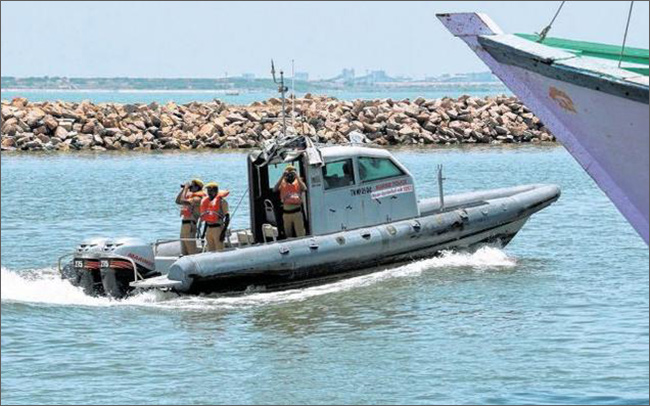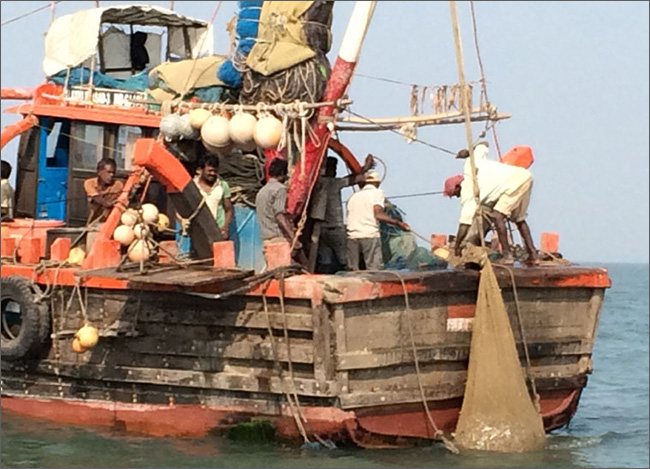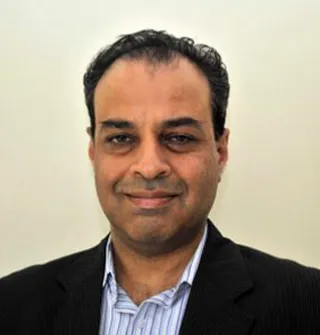-
CENTRES
Progammes & Centres
Location
The eighth anniversary of 26/11, the terror strikes in Mumbai, provides a fit opportunity to review the state of the country’s coastal security
 The eighth anniversary of 26/11, the terror strikes in Mumbai, provides a fit opportunity to review the state of the country’s coastal security. On that fateful day in 2008, ten Pakistani terrorists had entered Mumbai via the sea-route, attacking major public and commercial centres, killing over 150 people, jolting India’s political and security establishment.
In the aftermath of the attack, the national coastal defence apparatus was radically overhauled. A three-tier security arrangement was put in place, with the Indian Navy, the Coast Guard (CG) and the marine police jointly tasked with safeguarding India’s maritime zones. As the lead agency, the Indian Navy took on the task of protecting the outer-most tier. The Coast Guard would sanitise the intermediate layer extending up to the 12 nautical mile limit of the territorial waters, even as the marine police was entrusted with the security of the inner-most tier, comprising the shallow coast and inland waters.
An existing Coastal Security Scheme (instituted in 2005) was supplemented with plans to build more coastal police stations and surveillance infrastructure. The Coast Guard’s budget received a substantial impetus, with more funds for additional manpower, ships, surveillance assets and interceptor boats. Beyond the strengthening of the Coast Guard and marine police, radar stations were set-up along the coastline and automatic identification systems installed. Joint Operation Centres (JOCs) began monitoring maritime activity in the near-seas, even as intelligence networks were created to detect any signs of subversion along the coastal waters. Meanwhile, the fishing community was sought to be co-opted in a larger endeavour to keep India’s littoral spaces safe.
Eight years after its inception, however, the coastal security project remains a work in progress. Despite success in some key areas, the security apparatus remains riddled with critical gaps. As two recent Comptroller and Auditor General (CAG) audits reveal, flaws in the existing architecture persist, threatening to unravel the gains of recent years. From underutilisation of patrol boats to delays in the creation of shore-based infrastructure, manpower shortages and unspent funds, the audit report underscored the dismal state of coastal policing in India’s near-seas. Meanwhile, despite investing considerable resource, energy and capital in coastal security, the Navy and CG have struggled to bridge the deficit.
Part of the problem is the uneven nature of the coastal security narrative – in which the priorities of each maritime agencies have varied considerably, as also their understanding of what constitutes progress. With an inherently expansive vision of maritime security, the Indian Navy views big-ticket initiatives as the essential building blocks of the security architecture. From joint exercises in the Arabian Sea and Bay of Bengal, to the setting up of coastal radar chains, the National Command and Control Communications Intelligence Network (N3CIN), the Maritime Domain Awareness Plan and the Information Management and Analysis Centre (IMAC), the Navy considers high profile undertakings as the real measure of success of the coastal project. Consequently, naval operational commanders tend to see the coastal security glass as being “half full”.
The eighth anniversary of 26/11, the terror strikes in Mumbai, provides a fit opportunity to review the state of the country’s coastal security. On that fateful day in 2008, ten Pakistani terrorists had entered Mumbai via the sea-route, attacking major public and commercial centres, killing over 150 people, jolting India’s political and security establishment.
In the aftermath of the attack, the national coastal defence apparatus was radically overhauled. A three-tier security arrangement was put in place, with the Indian Navy, the Coast Guard (CG) and the marine police jointly tasked with safeguarding India’s maritime zones. As the lead agency, the Indian Navy took on the task of protecting the outer-most tier. The Coast Guard would sanitise the intermediate layer extending up to the 12 nautical mile limit of the territorial waters, even as the marine police was entrusted with the security of the inner-most tier, comprising the shallow coast and inland waters.
An existing Coastal Security Scheme (instituted in 2005) was supplemented with plans to build more coastal police stations and surveillance infrastructure. The Coast Guard’s budget received a substantial impetus, with more funds for additional manpower, ships, surveillance assets and interceptor boats. Beyond the strengthening of the Coast Guard and marine police, radar stations were set-up along the coastline and automatic identification systems installed. Joint Operation Centres (JOCs) began monitoring maritime activity in the near-seas, even as intelligence networks were created to detect any signs of subversion along the coastal waters. Meanwhile, the fishing community was sought to be co-opted in a larger endeavour to keep India’s littoral spaces safe.
Eight years after its inception, however, the coastal security project remains a work in progress. Despite success in some key areas, the security apparatus remains riddled with critical gaps. As two recent Comptroller and Auditor General (CAG) audits reveal, flaws in the existing architecture persist, threatening to unravel the gains of recent years. From underutilisation of patrol boats to delays in the creation of shore-based infrastructure, manpower shortages and unspent funds, the audit report underscored the dismal state of coastal policing in India’s near-seas. Meanwhile, despite investing considerable resource, energy and capital in coastal security, the Navy and CG have struggled to bridge the deficit.
Part of the problem is the uneven nature of the coastal security narrative – in which the priorities of each maritime agencies have varied considerably, as also their understanding of what constitutes progress. With an inherently expansive vision of maritime security, the Indian Navy views big-ticket initiatives as the essential building blocks of the security architecture. From joint exercises in the Arabian Sea and Bay of Bengal, to the setting up of coastal radar chains, the National Command and Control Communications Intelligence Network (N3CIN), the Maritime Domain Awareness Plan and the Information Management and Analysis Centre (IMAC), the Navy considers high profile undertakings as the real measure of success of the coastal project. Consequently, naval operational commanders tend to see the coastal security glass as being “half full”.
 In comparison, the Coast Guard officers are more circumspect about the prevailing state of affairs, cautioning against an overestimation of progress. While acknowledging improvements in the security architecture – particularly inter-agency cooperation – Coast Guard officers emphasise the structural nature of security challenges, which they insist cannot be addressed through high-technology initiatives alone. In their telling, coastal security remains unsatisfactory because of the failure of near-coastal patrols – particularly the inability of marine police to keep track of coastal fishing activity as also their unwillingness to integrate fully into the coastal security chain.
For some observers, the marine police’s lackluster showing is a symptom of State governments’ larger apathy towards coastal security. Indeed, barring Tamil Nadu (a State with some experience of fighting LTTE sea-tigers) hardly any other State administration has responded suitably to the needs of littoral security.
But State governments are also increasingly unwilling to play a part in coastal patrolling. Earlier this year, Devendra Fadnavis, the Chief Minister of Maharashtra, proposed the setting up of a Central Marine Police Force during a coastal security meet. Endorsed by other Chief Ministers present in the meeting, his proposal was accepted by the Union Home Minister who seemed convinced about the need for a dedicated coastal security agency. Yet, as anyone who has been involved in coastal security will explain, state administrations play a crucial role in littoral security initiatives. The plan to substitute the state-controlled marine police with a central maritime force is inherently ill-judged because it ignores structural impediments, such as the lack of local intelligence and regional language skills that the new agency is likely to come up against.
Another failure is the continuing absence of an apex maritime authority. The involvement of a large number of maritime agencies (over 15) requires a full-time coastal security manager. Even though the National Committee for Strengthening Maritime and Coastal Security (NCSMCS) has been fairly effective in coordinating matters related to coastal security, it is at best an ad-hoc arrangement. Unfortunately, the coastal security bill with a proposal to form a National Maritime Authority (NMA) has been caught in the red-tape since 2013.
This is not to suggest a total absence of order in the coastal domain. Recent years have witnessed a surge in security presence in the littoral seas, even as the frequency of joint exercises between teams of Indian Coast Guard, Coastal Security Group, Customs and Central Industrial Security Force (CISF) has shown considerable improvement. The inclusion of the fishing community during these interactions – as the “eyes and ears” of coastal security establishment -- has been a noteworthy development.
Most operational drills, however, have tended to focus on the terrorist infiltration threat. While the emphasis on preventing the recurrence of a 26/11 type incident is understandable, threats such as arms and narcotics smuggling, human trafficking, IUU fishing, climate induced crises and maritime pollution have received less attention. Some wrongly assume that satellite surveillance is the answer to all the ills that plague the near-seas. The importance of operational intelligence sharing, the physical preparedness of personnel and ships to tackle a diverse array of threat, as well as the assiduous cultivation of sources for human intelligence, is unwittingly discounted.
In comparison, the Coast Guard officers are more circumspect about the prevailing state of affairs, cautioning against an overestimation of progress. While acknowledging improvements in the security architecture – particularly inter-agency cooperation – Coast Guard officers emphasise the structural nature of security challenges, which they insist cannot be addressed through high-technology initiatives alone. In their telling, coastal security remains unsatisfactory because of the failure of near-coastal patrols – particularly the inability of marine police to keep track of coastal fishing activity as also their unwillingness to integrate fully into the coastal security chain.
For some observers, the marine police’s lackluster showing is a symptom of State governments’ larger apathy towards coastal security. Indeed, barring Tamil Nadu (a State with some experience of fighting LTTE sea-tigers) hardly any other State administration has responded suitably to the needs of littoral security.
But State governments are also increasingly unwilling to play a part in coastal patrolling. Earlier this year, Devendra Fadnavis, the Chief Minister of Maharashtra, proposed the setting up of a Central Marine Police Force during a coastal security meet. Endorsed by other Chief Ministers present in the meeting, his proposal was accepted by the Union Home Minister who seemed convinced about the need for a dedicated coastal security agency. Yet, as anyone who has been involved in coastal security will explain, state administrations play a crucial role in littoral security initiatives. The plan to substitute the state-controlled marine police with a central maritime force is inherently ill-judged because it ignores structural impediments, such as the lack of local intelligence and regional language skills that the new agency is likely to come up against.
Another failure is the continuing absence of an apex maritime authority. The involvement of a large number of maritime agencies (over 15) requires a full-time coastal security manager. Even though the National Committee for Strengthening Maritime and Coastal Security (NCSMCS) has been fairly effective in coordinating matters related to coastal security, it is at best an ad-hoc arrangement. Unfortunately, the coastal security bill with a proposal to form a National Maritime Authority (NMA) has been caught in the red-tape since 2013.
This is not to suggest a total absence of order in the coastal domain. Recent years have witnessed a surge in security presence in the littoral seas, even as the frequency of joint exercises between teams of Indian Coast Guard, Coastal Security Group, Customs and Central Industrial Security Force (CISF) has shown considerable improvement. The inclusion of the fishing community during these interactions – as the “eyes and ears” of coastal security establishment -- has been a noteworthy development.
Most operational drills, however, have tended to focus on the terrorist infiltration threat. While the emphasis on preventing the recurrence of a 26/11 type incident is understandable, threats such as arms and narcotics smuggling, human trafficking, IUU fishing, climate induced crises and maritime pollution have received less attention. Some wrongly assume that satellite surveillance is the answer to all the ills that plague the near-seas. The importance of operational intelligence sharing, the physical preparedness of personnel and ships to tackle a diverse array of threat, as well as the assiduous cultivation of sources for human intelligence, is unwittingly discounted.
 < style="color: #000000;">In some key areas, disagreements have come to the fore. On e-surveillance and boat identification, for instance, security agencies have advocated the active tracking of individual fishing boats through onboard transponders. In contrast, State maritime board officials (as for instance in Gujarat) have favoured satellite tracking systems. The latter have not always been motivated by operational considerations. As some maritime watchers have pointed out the political class has been led by the need to protect the fishing community – a core electoral vote-bank – from the prying eyes of security agencies, who fishermen believe could use the signals from onboard transponders to track their often illegal fishing activity.
For the Navy and the Coast Guard, however, the biggest upside has been their improved interoperability. The enhanced synergy in the operational domain has also reflected in their interactions with other maritime agencies -- notably the coastal police. Meanwhile, the setting up of the National Marine Police Training Institute in Dwarka (Gujarat) and the State Marine Police Training Centres in the Police Training Academies of State and union territories has shown promise for enhanced Navy-CG-Police coordination in littoral spaces.
India’s maritime security agencies are coming to realise that the coastal security transformation is likely to be a complex and long-drawn affair. With a diversity of challenges and multiplicity of agencies involved, a “business as usual” model is unlikely to succeed. Not only do the deficiencies that plague the system require cooperation, coordination and an alignment of vision, but also a unity of endeavor.
For it may well be the case that the only reason we have been safe since 26/11 is because we haven’t been seriously tested.
< style="color: #000000;">In some key areas, disagreements have come to the fore. On e-surveillance and boat identification, for instance, security agencies have advocated the active tracking of individual fishing boats through onboard transponders. In contrast, State maritime board officials (as for instance in Gujarat) have favoured satellite tracking systems. The latter have not always been motivated by operational considerations. As some maritime watchers have pointed out the political class has been led by the need to protect the fishing community – a core electoral vote-bank – from the prying eyes of security agencies, who fishermen believe could use the signals from onboard transponders to track their often illegal fishing activity.
For the Navy and the Coast Guard, however, the biggest upside has been their improved interoperability. The enhanced synergy in the operational domain has also reflected in their interactions with other maritime agencies -- notably the coastal police. Meanwhile, the setting up of the National Marine Police Training Institute in Dwarka (Gujarat) and the State Marine Police Training Centres in the Police Training Academies of State and union territories has shown promise for enhanced Navy-CG-Police coordination in littoral spaces.
India’s maritime security agencies are coming to realise that the coastal security transformation is likely to be a complex and long-drawn affair. With a diversity of challenges and multiplicity of agencies involved, a “business as usual” model is unlikely to succeed. Not only do the deficiencies that plague the system require cooperation, coordination and an alignment of vision, but also a unity of endeavor.
For it may well be the case that the only reason we have been safe since 26/11 is because we haven’t been seriously tested.
The views expressed above belong to the author(s). ORF research and analyses now available on Telegram! Click here to access our curated content — blogs, longforms and interviews.

A former naval officer Abhijit Singh Visiting Fellow at ORF. A maritime professional with specialist and command experience in front-line Indian naval ships he has been ...
Read More +